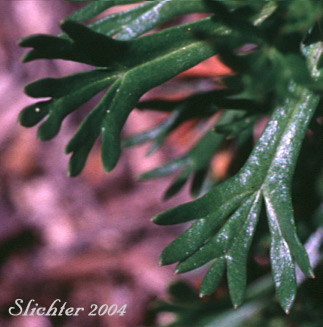 Characteristics:
Characteristics:
Partridge foot is a mat forming perennial which is somewhat shrub-like. The upright and generally unbranched stems range from 8-15 cm high. The leaves are mostly crowded in dense basal tufts. The individual leaves measure up to 2 cm long and are deeply lobed at the tip with the result that the leaf looks like a partride foot. The petioles are narrowly wing-margined and measure about one-half the length of the leaf.
The inflorescence is a congested raceme at the tip of each stem. The flowers are white but appear yellowish due to the numerous stamens. Each flower has 5 petals, each of which measures from 3-4 mm long. The hypanthium is bowl-shaped.
Partridge foot is found on sandy, subalpine and alpine soils on moist or shaded ground. It is often found where snow persists late into the season.
Partridge foot may be found from Alaska and the Yukon south through the Cascades to northern California. It is also founs southwards from southern British Columbia and southwestern Albert through the Rocky Mts. into western Montana and eastern Idaho.
In the Columbia River Gorge it may be found at an elevation of about 4500' on Indian Mt.
Partridge foot is an attractive foliage and flowering plant for the semi-shady rock garden. If it is planted in the open, it is best to keep it well irrigated.